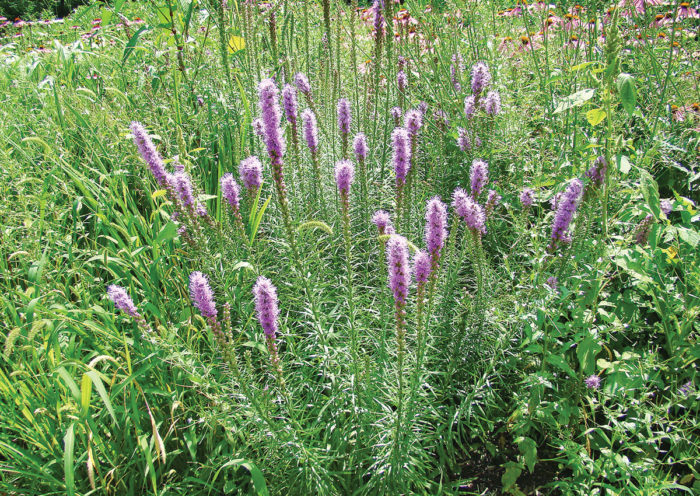
Incorporating native plants into your landscape design is an easy way to help support your local wildlife. Native plants support native insects. If we keep our native insect populations healthy and thriving, it helps support native birds, who eat the insects as a food source. The chain of positive impacts that planting native plants provokes stretches throughout the food chain of organisms and can even help ward off potential threats such as blights or pest outbreaks.
Below, you’ll find some of the best native plants for the Midwest.
1. Prairie Sedge

Name: Carex bicknellii
USDA Hardiness Zones: 3 to 7
Size: 2 to 3 feet tall and 18 to 24 inches wide
Conditions: Full sun to partial shade; adaptable to most soil
I use this hardy deer-resistant plant, also known as copper-shouldered oval sedge, as a substitute for small ornamental grasses in many different garden conditions. A full-sun plant (most sedges prefer shade and moist soils) that adapts to half-day sun or light shade from trees, it serves as a great ground cover and allows taller flowering perennials to shine. Whether planted in poor soils around newly constructed homes, in a fertile border, or even on the sides of a rain garden, it performs well. The narrow, medium green leaves emerge in spring, while copper-colored, oval-shaped seed heads appear in early summer.
2. Hoary Vervain

Name: Verbena stricta
Zones: 3 to 8
Size: 2 to 4 feet tall and 18 to 24 inches wide
Conditions: Full sun; well-drained soil
Described as having a blue, purple, or lavender hue, hoary vervain is a welcome contrast to the many yellow and orange flowers common on the prairie. Narrow leaves encircle the stalks below spires of flowers. The nectar provides a food source for butterflies, and the leaves play host for the common buckeye butterfly larvae. This native plant adds spring and summer color without overwhelming its neighbors. Combine it with round or flat flowers. In the tough conditions of full sun and dry soil, hoary vervain blooms freely. Deer resistance adds to its appeal.
3. Gray-Headed Coneflower

Name: Ratibida pinnata
Zones: 3 to 10
Size: 3 to 6 feet tall and 2 feet wide
Conditions: Full sun; well-drained soil
This tall, graceful prairie plant will sway in the breeze, intertwining in a friendly way with its neighbors, unlike some other thuglike prairie flowers. The young flower sports a gray cone, which helps to distinguish it from other coneflowers. Blooming all summer, this perennial (sometimes labeled as yellow coneflower) attracts many pollinators and butterflies, and it tolerates drought and clay soils. It is also deer resistant. Pair this tall beauty with the shorter, showy black-eyed Susan (Rudbeckia hirta and cvs., Zones 3–7) for a combination of repeating yellows.
4. Prairie Blazing Star

Name: Liatris pycnostachya
Zones: 3 to 9
Size: 3 to 6 feet tall and 18 to 24 inches wide
Conditions: Full sun; medium and moist soil
Blooming in midsummer with lavender flowers, this species of blazing star grows tall but takes up a small amount of horizontal space. I love to see the purple spikes marching through the garden, where they don’t obscure the view of shorter surrounding plants. The flowers bloom from the top down and attract butterflies, pollinators, songbirds, and hummingbirds. Add it to your list of deer-resistant perennials. It makes a wonderful cut flower to bring into the house and offers a different form and size than more common marsh blazing star (Liatris spicata, Zones 3–8).
Judy Nauseef is a garden designer in Iowa City, Iowa, and author of Gardening with Native Plants in the Upper Midwest.

















Comments
Log in or create an account to post a comment.
Sign up Log in